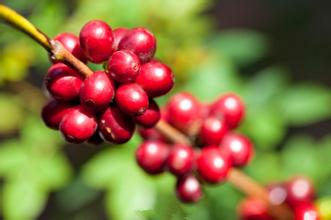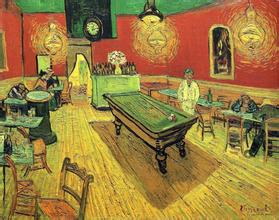Characteristics and Flavor description of Colombian hand-washed Coffee beans
Characteristics and Flavor description of Colombian hand-washed Coffee beans
Colombian coffee is located in the Andes, where the mild climate, humid air and good rainfall make it very suitable for coffee growth. according to its geographical location, Colombian coffee is divided into three producing areas: northern, central and southern, in which there are six high-quality coffee producing areas in Colombia, Sierra Nevada,Santander, Cauca, Huila,Nari ñ o and Paisaje cultural cafetero.
The northern Sierra Nevada producing area is one of the high quality producing areas in Colombia, and the Santa Marta Snow Mountains is one of the few snowy mountains on the equator, and its caffeine is famous for its distinctive characteristics and high quality standards. The unique climate, abundant precipitation, cloud cover and shade planting make the coffee here full-bodied and nutty, giving people a unique sensory experience.
The north-central Santander producing area consists of two major geographical areas: the Magdalena Basin and the mountains of the eastern mountains. The Magdalena basin is relatively flat, with a dry and hot climate in the central plain.
The eastern mountains have rugged terrain, steep slopes and an altitude of 4000 meters. The climate is affected by different elevations, which makes it show a variety of meteorological zones, resulting in a rich aroma of coffee and moderate acidity. Smooth and consistent with tobacco flavor.
Huila is located in southern Colombia, one of the well-known specialty coffee producing areas, with an altitude of about 1200 to 2020 meters, a planting area of more than 1.3 million hectares and an average temperature of 17 to 23 °C. Because of its outstanding flavor and aroma, it has become a world-famous special coffee. Medium-high acidity and moderate mellowness, charming sweetness and lemon wine acid, balanced and pure aftertaste, it is often selected by major coffee competitions in recent years.
Japanese coffee does not just refer to hand brewing or siphon. Americans also do hand brewing, and have established a scientific coffee system based on a large number of experiments and data analysis. There are also many people in Japan who play with American coffee. However, according to the different understanding of each store, it will decide whether to use the brain to control consistency and stability, or to carefully control the variability of each cup tailored to customers. For example, when doing hand flushing, the American boutique coffee system will pay special attention to water temperature, grinding degree, powder-water ratio, extraction rate, curve …... On the other hand, the Japanese style will, on the basis of eating through these data, throw away these crutches, clear the mind, and then pay more attention to the interpretation of the "present". This "present" includes the barista's understanding of the beans, the feelings of the guests in front of them, and the capture of the comprehensive aura inside and outside the bar at that time. He is like an excellent pianist. What he has in mind is no longer exactly where the next syllable finger falls, what the strength and rhythm should be, what he does is actually relax his mind, and then devote himself to his experience and world view, the feeling given to him by the object of playing, and the emotions that pervade his heart at the moment, all combined into that song and conveyed through his fingers.

Important Notice :
前街咖啡 FrontStreet Coffee has moved to new addredd:
FrontStreet Coffee Address: 315,Donghua East Road,GuangZhou
Tel:020 38364473
- Prev

Flavor description and taste treatment of Costa Rican yellow honey coffee beans
Description of the species and flavor of Costa Rican yellow honey coffee beans the taste treatment of Costa Rican coffee has a long history, but in the past 10 years, even more cutting-edge dry treatment has become a trend, collectively known as the new method of honey treatment. the function of using the scraper to adjust the scraping degree of the pulp produces a sense of honey from light to strong with the color from light to dark (white, yellow-red-white, yellow-red-black) and sour.
- Next

Description of taste and flavor of Panamanian butterfly coffee beans
Panamanian butterfly coffee beans taste description grinding scale production area Panamanian specialty coffee is divided into small batches classified and numbered, small batches are designed to small capacity for optimal management, classification numbers enable buyers to understand and track the information of the whole process. Because of its small quantity, Panamanian coffee products are based on special coffee. The state provides to specialized stores all over the world.
Related
- Detailed explanation of Jadeite planting Land in Panamanian Jadeite Manor introduction to the grading system of Jadeite competitive bidding, Red bid, Green bid and Rose Summer
- Story of Coffee planting in Brenka region of Costa Rica Stonehenge Manor anaerobic heavy honey treatment of flavor mouth
- What's on the barrel of Blue Mountain Coffee beans?
- Can American coffee also pull flowers? How to use hot American style to pull out a good-looking pattern?
- Can you make a cold extract with coffee beans? What is the right proportion for cold-extracted coffee formula?
- Indonesian PWN Gold Mandrine Coffee Origin Features Flavor How to Chong? Mandolin coffee is American.
- A brief introduction to the flavor characteristics of Brazilian yellow bourbon coffee beans
- What is the effect of different water quality on the flavor of cold-extracted coffee? What kind of water is best for brewing coffee?
- Why do you think of Rose Summer whenever you mention Panamanian coffee?
- Introduction to the characteristics of authentic blue mountain coffee bean producing areas? What is the CIB Coffee Authority in Jamaica?

